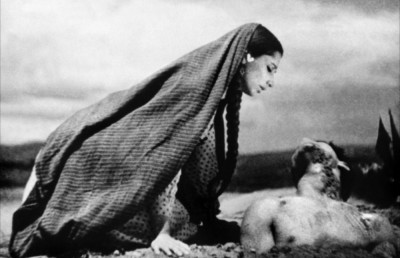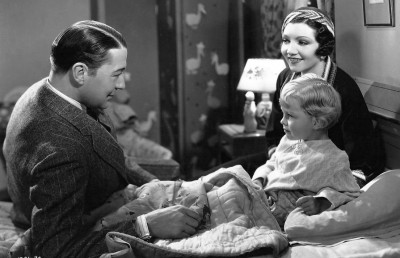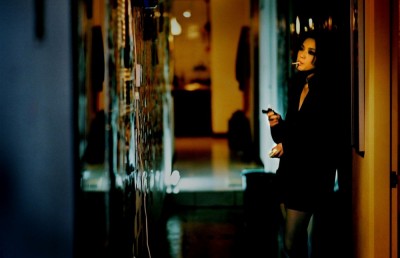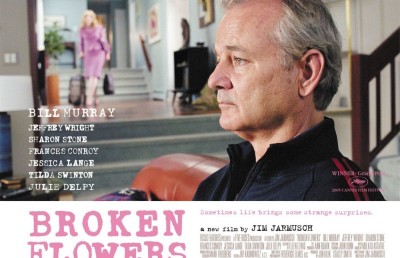Wuxia Masks: On Come Drink With Me and the Beijing Opera
The Artistry of King Hu
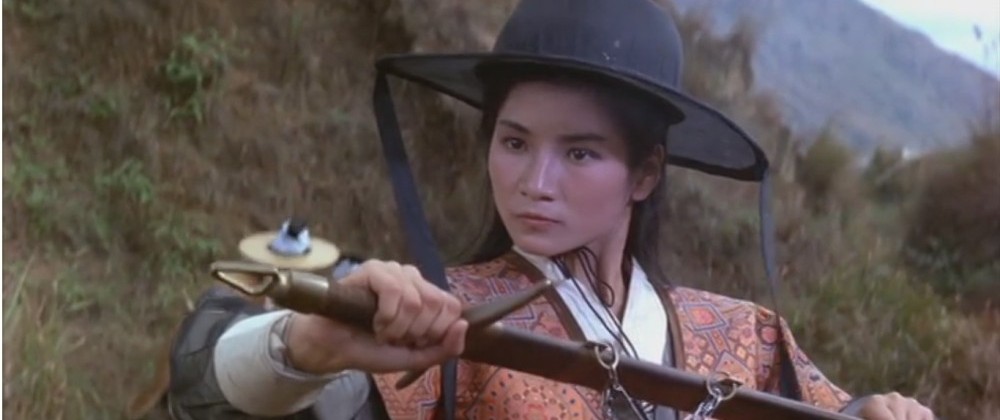
Compared to other Wuxia Pans of the time, Come Drink With Me was a ground-breaking, avant-garde film. The only reason the film may seem dated today is that most of its revolutionary techniques are now a mainstay in popular Hollywood action cinema, having been popularized by the late 1980s – early 1990s films of Tsui Hark and John Woo. The only elements that stand out (negatively) are its outdated special effects (much in the way that Hitchcock’s Vertigo or Marnie appears to us today). For us to truly understand the “revolution” in King Hu’s martial arts films (and more specifically Come Drink With Me), we must first understand his incredibly complex approach to Wuxia Pan.
What made Hu different from other martial arts (or action) film directors of his time was his awareness of the intrinsic value of the action as self-sufficient spectacle within his films. As Stephen Teo puts it, “Audiences watching Hu’s movies are thoroughly engaged in the pleasure and spectacle of martial arts.”1 It is this self awareness of the fact that ultimately the action in his “action films” was going to be perceived by an audience as a performance within the film (which is a performance unto itself) that drove Hu to better understand it by breaking its elements down. King Hu effectively managed to deconstruct the Wuxia Pan genre in order to find its roots in the traditional Beijing Opera, from which he sought inspiration for different means of stylization in order to enhance and dynamise the viewing experience of action cinema. His innovations in martial arts cinema stylization can be seen everywhere in Come Drink With Me (which is what made it so revolutionary at the time of its release in 1966): Hu intensified the viewing experience through the use of choreography, camera movement, editing and even the cinemascope frame. And so in order to fully understand Hu’s auteuristic stylization of the Wuxia Pan, one must investigate its source (that is, of both his inspiration and of the Wuxia Pan genre): the Beijing Opera. Most importantly, we must address the primacy of the performative in Come Drink With Me.
In a 1984 interview with Charles Tesson in Les Cahiers du Cinéma, Hu made a pretty surprising statement when discussing Come Drink With Me: “I didn’t want to use real martial arts what we call real kung-fu. I had seen it in tournaments, I didn’t find it very beautiful and I didn’t understand a thing about it; as a matter of fact, I still don’t.”2 The question practically asks itself: how could a man with no interest in martial arts revolutionize martial arts cinema? The fact of the matter is, Hu never saw the martial arts in his films solely as “action”; for him, to have “action” occur on the screen was not enough to make a film an action movie. The kung-fu in Come Drink With Me (and in his later Wuxia films like Dragon Gate Inn and A Touch Of Zen) was never conceived as actual confrontation, but as dance, performance. In fact, the action in the film(s) is choreographed to the performing style of Beijing Opera and the rhythm and beat of its orchestral score (a score mainly performed by traditional instruments from Opera, the wailing flute and the Chinese tempo-drums). Hu in fact deliberately chose both his lead actress, Cheng Pei Pei, and his action choreographer, Han Ying-Chieh, because of their background in Beijing Opera. Previous to Come Drink With Me, Cheng Pei Pei had no martial arts experience whatsoever. Hu claimed to have “always taken the action part of [his] films as dancing rather than fighting”3, “always keyed to the notion of dance.”4 And so, what makes the fights in Hu’s films so interesting is the fact that they aren’t really fights at all: they are performances, dances made to look like fights. This is the first of many examples of the performative, the “mask,” in Come Drink With Me (which, incidentally, is an adaptation of a Beijing Opera named The Drunken Beggar) and in Hu’s cinema in general, as it is probably the most important recurring theme in the film, that of one thing made up to seem like another. We find here that the “mask” of performance from Beijing Opera can be found throughout the film, not only literally but figuratively and structurally as well.
Masks are worn figuratively by every character in the film, as Hu plays with the traditional archetypes of the Wuxia Pan genre. Come Drink With Me contains several types: the military man, the drunkard, the gang boss, the ruthless assassin, and the abbot. This saves Hu from having to “waste time” developing the characters, as each of these types is well known in the Wuxia genre (spanning Opera, serial novels and film) and have predetermined trajectories and behaviors. Yet, none of these characters are what they appear to be, these types, appearances, are performances, much like the “fights” punctuating the film itself, are only spectacle hiding something else; Drunken Cat who, at first, seems to be a clumsy drunkard reveals himself to be a kung-fu master; Jade-Faced Tiger, on the other hand, who seems to be a delicate, effeminate man (wearing the white makeup of the traitor in Beijing Opera), reveals himself to be a ruthless assassin; the abbot, seemingly a peaceful Buddhist monk, is in fact an evil Kung-Fu master who killed his own teacher. Finally, there is Golden Swallow, the military man who reveals himself to be female; though now androgynous warrior women are a staple of the Wuxia Pan, Golden Swallow was the first to truly make the type popular and transcend gender roles: the character is very confusing, as the audience doesn’t know whether she is a woman posing as a warrior or a warrior posing as a woman.
The archetypal masks that the main characters “wear” prevent the audience from knowing who or what the characters are and where their loyalties lie; this is the most basic element in the film that creates a tension between performance and essence, something that is strongly emphasized stylistically through editing and camera movement. The Inn scene is an excellent example of this: the masks create an incredible juxtaposition of tension and civility that prevent us from knowing (at face value at least) where a character’s loyalty lie. The scene is fraught with double-meanings; is Smiling Tiger inviting her to drink or fight? Is the gang being convivial or hostile? As a reaction to this, the scene ceases to exist on the first degree: the Inn scene suddenly becomes a series of signs [5] that will determine not only the dynamics of the scene, but of the film itself. These signs (basically the buildup, the tests the gang puts Golden Swallow through to prove her skill), emphasized by clever editing on movement, will determine the oppositional dynamic between the heroine and the gangsters for the entire feature. Hence the fight scenes are remarkable not only for their aesthetic qualities but for re-stating narrative conflicts and regulating the balance of power between protagonists and antagonists that make up the plot. This use of the fight scenes not only relates back to the choreography/music function in Beijing Opera but in the classical American musical.6 And let us not forget the actual musical number in Come Drink With Me, where Drunken Cat (in another skillful play on double-meaning) publicly (and subversively) sings the location of the bandits; this musical sequence is not only another example of performance, it is an essential (“masked”) piece of information that allows Golden Swallow to continue her quest and for the plot to move forward.
In a sense, the fight scenes (as well as this musical scene) are self-contained microcosms that re-state the film’s dynamic, yet also (a consequence of being so self-contained) break the diegetic flow, much like musical numbers in the American musical. One may say that the narrative is not only structured according to the same pattern as the choreography but as the camera movement and editing as well: the PAUSE-THRUST-PAUSE [7] movement of Beijing Opera ballet. Take Golden Swallow’s movements for example; much like dance, her fighting technique oscillates between swift and powerful strikes and graceful pauses. This dance-like method of choreographing fights is not only more fluid and elegant than attempting to stage “realistic” ones, but also supports the tension between performance and “the face under the mask” present throughout the film; is she fighting or dancing? Who will strike next? Furthermore, the choreography is timed to the tempo of the Opera, emphasizing the dance.
The choreography in King Hu’s films, though, (much like Max Ophuls’ in Lola Montes) is not limited to the character action; importantly, the camera movement and the editing are as choreographed as the characters themselves and as much responsible for the film’s elegant Opera-inspired style.
Hu once claimed that he was “interested in Beijing Opera’s movement and action effects, though [he] thought they were difficult to express adequately on stage.”8 Hu’s use of camera movement is very much a reaction to this difficulty, as he decided to use the camera movement and editing to have it, in a way, dance (or fight) alongside the characters. Examples of this can be found in nearly every fight in the film, but the most impressive are from the bandits attack on Golden Swallow’s troops late in the film. The camera movement not only draws the viewer into the action, since the camera itself is in synchronized action with the main characters, but it also often centralizes the viewer’s attention (despite the movement) on the most stable (not static) element in the frame which, most of the time, is one of the protagonists. While the empty environment that takes up most of the frame shifts and blurs, the only element that we clearly see is the central character, fighting, dancing. These camera movements impart a stylish vibrancy to every action the character takes. Hu also used this tracking camera in his interior sets to a similar effect; in closed environments where he had little depth of field, he created it by moving the camera. Again, the shifts in perspective draw our attention to the only clear element in frame: the hero(ine).9 King Hu actually meticulously planned both the character and camera choreography before he shot in order (being also a set designer) to build the set in consequence. Another element supporting the camera’s dance is the music, as the camera often moves with greater or lesser intensity depending on the tone of the music. Camera and music are often combined (in a very classical yet stylized way) to travel into an important element, either a character’s intense reaction (further intensified by the camera movement) or a surprising revelation.
As I previously mentioned, the camera movement, much like the fight/dance choreography and the actual structure of the film, seems structured around the Pause-Thrust-Pause pattern, as it very rarely segues several camera movements immediately (unless it is necessary to cut on camera movement). The camera, like the actors, moves very suddenly only to later slow down or stop completely, or cut to a static shot. This stylization of camera movement not only moves synchronously with the actors but further emphasizes the fundamental tension of the film: movement versus stillness, things as they are versus things as they seem, the mask versus the face, the status versus the potential. In his 1983 interview with Charles Tesson, Hu mentions his conception of art as being twofold: “appearance is one thing, seeing something’s essence is another”. Camera movement therefore must be punctuated with static shots in order to contrast performance with reality.
Another of Hu’s interesting signatures is his pulling the camera back from the action, allowing long takes/long shots to show beautiful and completely unedited movements and painterly mise-en-scène and camera placement. His framings often remind us of traditional Chinese scroll paintings, where the “void” emphasizes character perspective; With Hu also being a painter and a historical scholar, this isn’t too surprising. Hu has even specifically mentioned using smoke and fog to emphasize perspective within the void.10 His frequent use of high angle shots is also consistent with this aesthetic, as it reveals more of the ground than anything else, the characters (as in scroll painting) being relatively scarce. Pans are also often used during outdoor scenes, emphasizing expansiveness and laterally exploring an otherwise empty environment. These extensive pans, combined with the Shawscope frame, recall once again traditional Chinese scroll painting, as the camera progressively explores an environment that seems to be —like a scroll— unrolling itself before our eyes.
Though the camera and fight choreography are in great part responsible for ??Come Drink With Me??’s elegance, the film’s incredible fluidity could not have been achieved without Hu’s adroit editing. Hu does not use editing solely in order to tighten his film, to avoid awkward pauses or movements; his use of editing actually enhances the performances already made spectacular through dance and camera movement. Hu’s brilliant cutting on movement, while emphasizing the singularity of each shot, also highlights the fluidity of the overarching movement. Hu often edits his fights to the percussive drums of his traditional score, cutting on movement while a drum beat is heard; this stylistic cutting once more calls attention to the fight choreography’s origins in Beijing Opera, where movement is accentuated by the drum beat. Editing is therefore an essential part of King Hu’s camera choreography, as sudden cuts on both action and music enhance the kinetic energy of the fight sequences without interrupting the fluidity of the dance/fights.
Furthermore, many fantastic feats were only made possible through skillful montage. A good example of this is the catching of the coins with the chopstick early on during the inn sequence.
When Hu does break choreographies down into closer shots, since everything has been edited to the beat of drums, each shot becomes a step in a greater choreography. The editing highlights the cuts, but maintains the elegance of the movements. The cuts, while they could easily clash with the overarching dance, here become a part of the choreography because they are as violent to the viewer’s eye as the very action they are cut on. Fluidity is achieved through violence. Here, the editing unifies the action not only figuratively —the dance becomes martial arts— but literally by breaking it down to its most basic components: single movements. The best example of this is Golden Swallow’s first act of violence in the Inn; the action is broken down into four successive fluid shots that each show a part of her overall defense: first she throws the alcohol into the man’s eyes (1), then she reaches for her dagger (2), then she avoids a blade (3), then she slashes a man (4). Four otherwise unconnected shots become, through Hu’s knowledge of Opera and editing, one single graceful movement.
Components are broken down, to be reorganized for better fluidity and elegance, not only in the editing, but in the process of making Come Drink With Me itself. Hu’s brilliant understanding of a traditional performative art of the past allowed him to greatly enhance and “modernize” the art of his present.
Endnotes
1 Stephen Teo’s Senses Of Cinema December 2000 review of Ang Lee’s Crouching Tiger, Hidden Dragon.
2 Charles Tesson, Calligraphie et Simulâcres, in Made In Hong Kong, numéro special Cahiers du Cinéma, No. 362-363 (Septembre 1984). p. 22.
3 Rayns, Tony, “Director: King Hu,” Sight and Sound, Vol 45, no 1. p. 11.
4 Rayns, Tony, “Director: King Hu,” Sight and Sound, Vol 45, no 1. p. 11.
5 See Olivier Assayas’ “King Hu : Géant Exilé,” in Made In Hong Kong, numéro special Cahiers du Cinéma, No. 362-363 (Septembre 1984), p. 19.
6 Rick Altman, The American Film Musical, Bloomington: Indiana University Press, 1987.
7 This descriptive phrase is derived from David Bordwell’s “Pause/Burst/Pause,” which Bordwell feels is a pattern of staging and filming action scenes typical of Hong Kong action films in general. Bordwell defines it in his book Hong Kong Planet. Cambridge, Mass. : Harvard University Press, 2000, p. 221. The appearance of it in Come Drink With Me may be a prototype of this technique/pattern
8 Rayns, Tony, “Director: King Hu,” Sight and Sound, Vol 45, no 1
9 Rayns, Tony, “Director: King Hu,” Sight and Sound, Vol 45, no 1
10 Charles Tesson, “Calligraphie et Simulâcres,” in Made In Hong Kong, numéro special Cahiers du Cinéma, No. 362-363 (Septembre 1984).


